Cooking in Roma with InRome Cooking
Culinary tourism is definitely a thing, and nowhere more so than in Italy.
Food tours and cooking classes abound and for good reason. Italy and food go together like, well, Italy and food.
The popularity of Stanley Tucci’s series Searching for Italy about food in Italy is proof that eating and cooking continue to be two of the many artsy reasons to travel in Italy.
Is cooking an art? Absolutely!
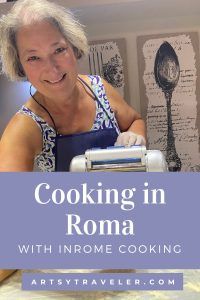
And so, while spending a week in Rome, I decided to take a cooking class. I’d taken a cooking class in Paris, and one of my guest posters, Liz Reding, has written a post about her cooking class experiences in France and Spain.
It was time for Italy to take a turn.
Choosing InRome Cooking
I chose a 3-hour cooking class with InRome Cooking. Here’s the link to register if, after reading this post, you’re interested in taking the class.
Full disclosure – the link takes you to the Tiqets.com website, which is one of my affiliates. That means I get a small percentage of the ticket price if you register.
Cut to the chase–I highly recommend taking a 3-hour class with InRome Cooking. The time flew by and not only did I learn a lot, but I also enjoyed a fabulous meal that I’d cooked myself with some help from my new friends and chef Marco.
About InRome Cooking
InRome Cooking operates out of three locations:
- Flagship school on Corso del Rinascimento in a converted 17th-century palace very close to the Piazza Navona and overlooking the Italian parliament. This is the location for the Hands-on Pasta Making Class & Tiramisù class I took.
- A sleek and stylish terraced building near the Pantheon on Via Giustiniani.
- A cooking school located in the Pope’s organic farm at his private estate in Castel Gandolfo outside Rome.
My Experience with InRome Cooking
In this post, I write about my experience taking a 3-hour class at the Corso del Rinascimento location.
InRome Cooking offers several classes–either shared or private.
I chose the Hands-on Pasta Making Class & Tiramisù for two reasons. First, my husband, Gregg Simpson, had recently discovered the delectable delights of Tiramisù and so I thought it would be good to learn how to make it at home. And second, I have a pasta maker gathering dust in my cupboard, and felt it was high time I learned how to use it correctly.
Both goals were met during the course of the evening.
Registering for a Class with InRome Cooking
I registered for the class about three days in advance, in October 2022. The registration process through Tiqets.com was quick and efficient. Within seconds, I had my ticket downloaded and ready to show. It’s advisable to register well in advance. I was probably lucky to get a spot because the class of just twelve participants was full.
Arriving at InRome Cooking
Promptly at 5:20, I arrived at InRome Cooking located at Corso del Rinascimento, 65 after passing it and then doubling back. You have to look closely to see the rather small InRome Cooking sign on the door.
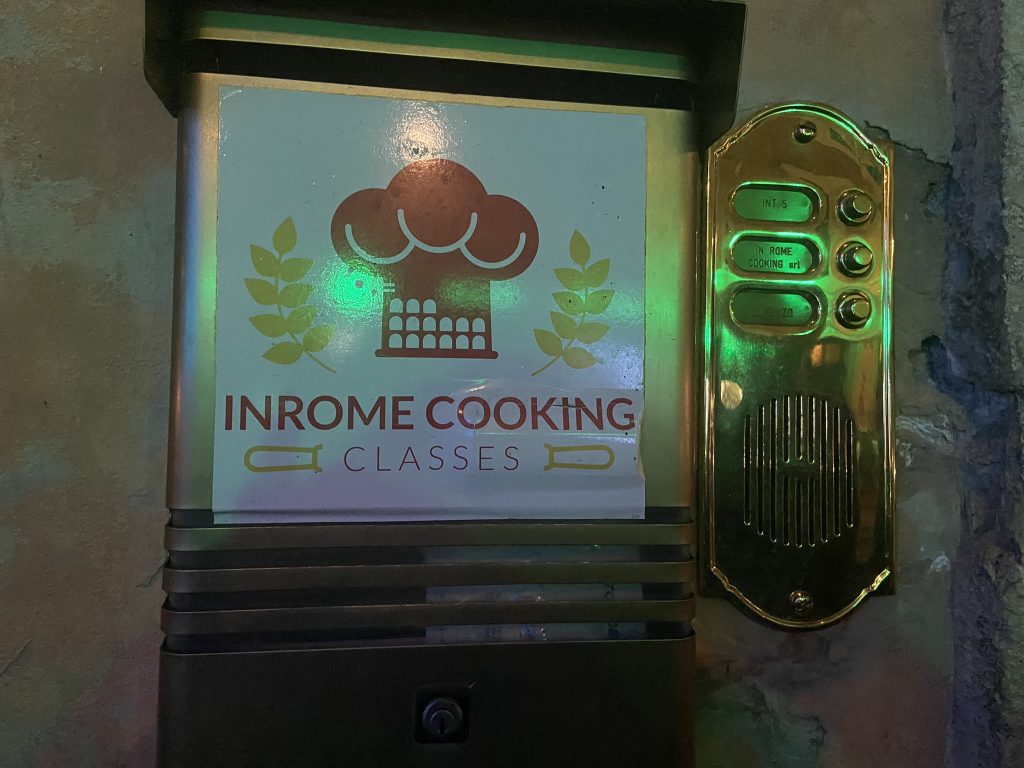
For a few moments, I was flummoxed, but soon figured out that I needed to ring the buzzer to be let in. A voice answered (phew!), the buzzer buzzed, and I climbed two flights of marble stairs in the converted 17th-century palazzo. I do like a nice palazzo.
I was met at the top of the stairs by Chef Marco holding a clipboard and smiling broadly. He ushered me into a gorgeous, light-filled kitchen and introduced me to my companions for the evening: a mother and son from Arizona; a mother and son from Sweden, a mom and dad and son from San Francisco, and two couples from Toronto.
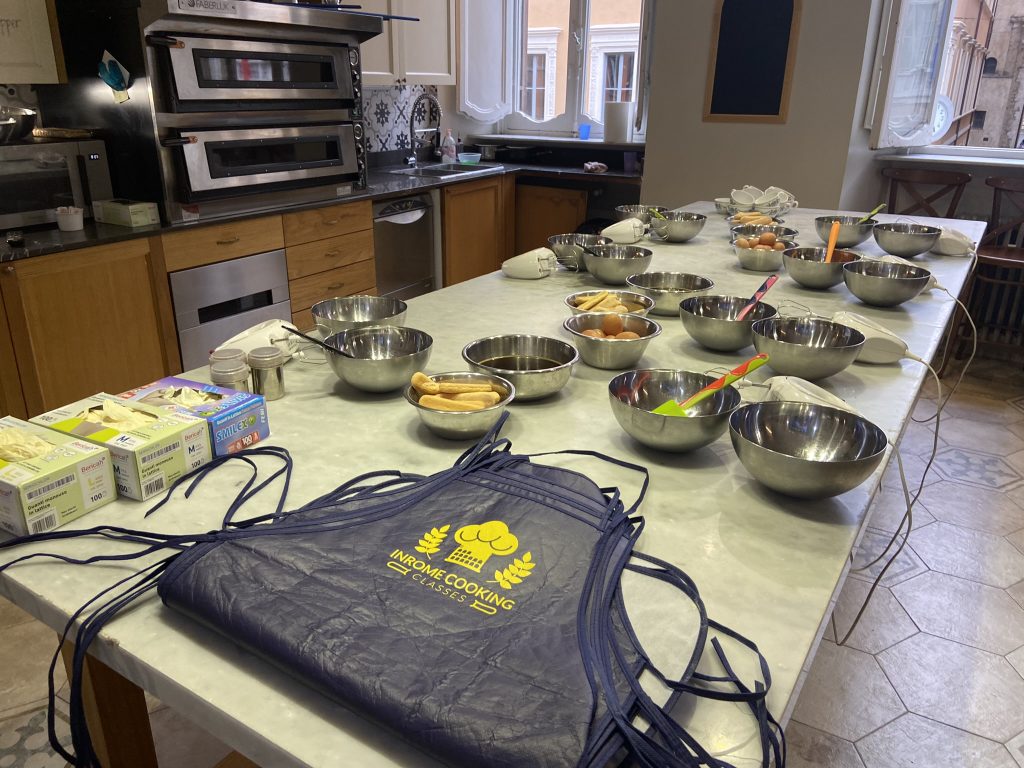
The evening began promptly at 5:30 with a welcome glass of prosecco. We were then placed around the large table already laden with the ingredients and utensils we’d need to make Tiramisù.
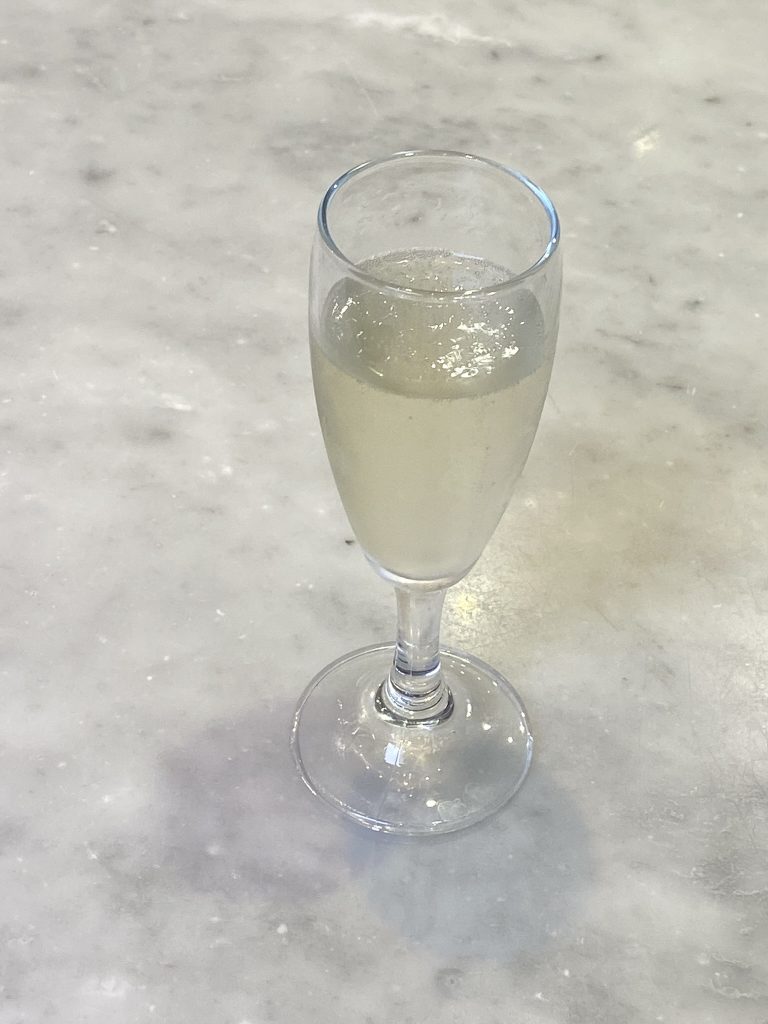
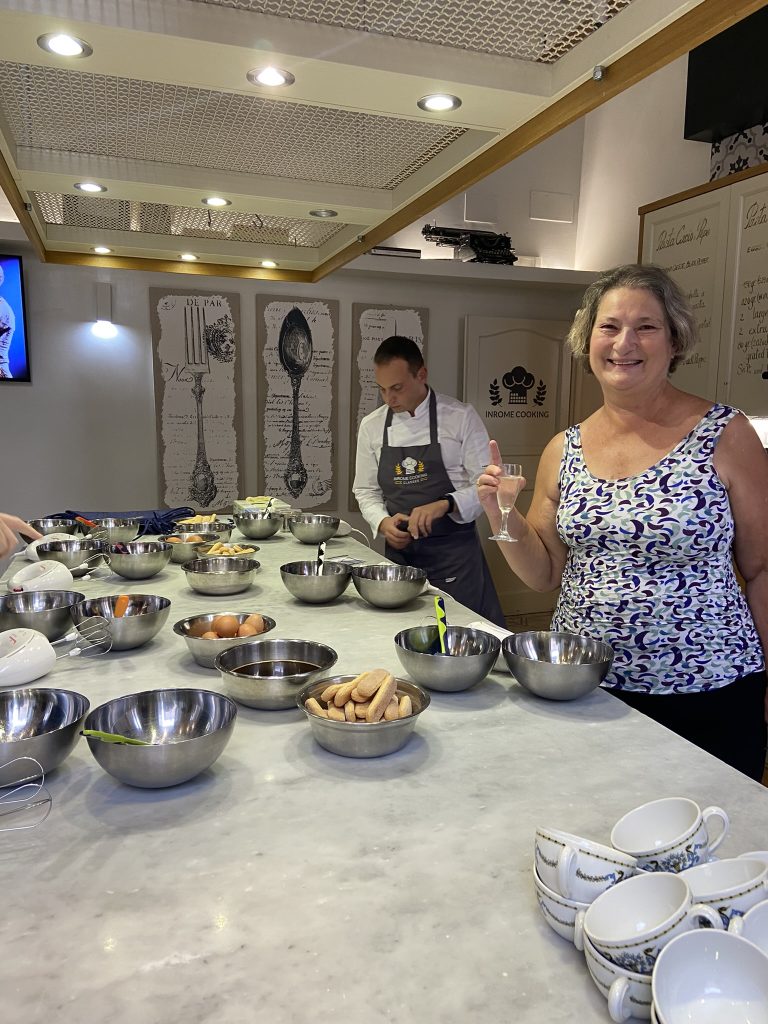
Making Tiramisù
We started by making dessert so it would have time to set before enjoying it at the end of the evening.
Chef Marco paired us up and told us to get cracking (literally!). We each separated an egg to get two yolks. The whites were whisked away to be beaten by the sous chefs for later folding into the Tiramisù. We then set to work beating the gorgeous yellow yolks.
Marco told us that fresh eggs are essential for Tiramisù (or indeed any cooking). They shouldn’t be much older than a few weeks and preferably from local hens. I’m lucky that I live on an island where fresh eggs are readily available.
Throughout the evening, Marco emphasized that great cooking starts with the very freshest of ingredients. You don’t need many ingredients to create a wonderful dish when each ingredient is top quality.
Tiramisù Ingredients
For the Tiramisù, we used only six ingredients: fresh eggs, sugar, mascarpone cheese, ladyfingers (called savoiardi), cold coffee, and cocoa powder (unsweetened) for the topping. Tiramisù translates literally as “pick me up,” a direct result of the espresso used in the recipe.
Tiramisù Method
Under Marco’s expert tutelage, we beat sugar into the egg yolks until the color was a rich and creamy light yellow. The more we beat, the creamier the eggs became. I’d say we beat for at least five minutes. Fortunately, Marco supplied links to recipes at the end of the class so I didn’t need to make notes.
After beating the eggs and sugar, we stirred in very generous dollops of mascarpone cheese. Marco emphasized that precise measuring is not necessary in Italian cooking. A generous tablespoon looked to me more like two or three level tablespoons. But then is there such a thing as too much marscapone?
Next step was folding in generous spoonfuls of whipped egg yolks.
Layering the Tiramisù
With our creamy, eggy, cheesy concoction all mixed and ready to go, we were ready to build our Tiramisù. Marco handed each of us a lovely big tea cup (I suppose coffee cup would be more accurate!) and demonstrated the next steps.
First, I took a ladyfinger biscuit and dipped it quickly into the bowl of cold espresso. Down and up, no lingering. The ladyfinger should absorb the coffee but not be dissolved by it. I then broke the ladyfinger in two and placed it at the bottom of the cup.
Next, I spooned in half of the creamy, eggy, cheesy mixture and then dipped and broke another ladyfinger. Finally, I slathered on the rest of the creamy stuff.
One more step! We were given shakers of pure, unsweetened cocoa to sprinkle on top of the Tiramisù and directed to carve something meaningful into the cocoa so we’d know which one is ours.
Here’s my first (and extremely delicious) attempt at Tiramisù with my initials etched in with a toothpick:
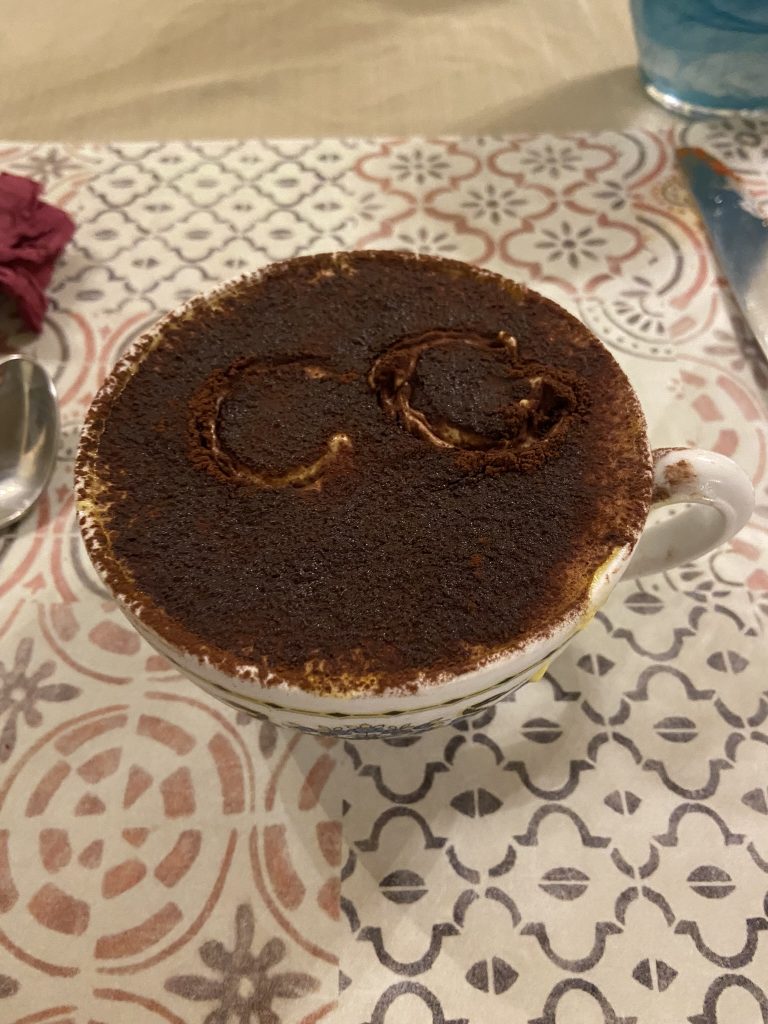
Making Pasta
The Tiramisùs were whisked away and the large workspace cleaned by the staff while I mingled for a while with the other guests and enjoyed another glass of prosecco. Two of the people from Toronto had been to Bowen Island where I live, and one has a friend who has just written her first historical novel. Coincidentally, it’s about a subject that intrigued me after visiting the Back to Backs National Trust property in Birmingham. Small world.
We were to make two kinds of pasta: cacio e pepe and amatriciana. It turned out we wouldn’t be making the sauces; Marco demonstrated that. Our job was to make the pasta.
Marco showed us how to mix the two flours and then to knead in the olive oil to make a beautiful, yellow dough. Next step was to pass the dough through the rollers of the pasta maker several times to flatten it and then through the cutters.
The pasta makers were equipped with two cutters–one to make spaghetti which we later ate with the cacio e pepe sauce and one to make fettucine, which we ate with the amatriciana sauce.
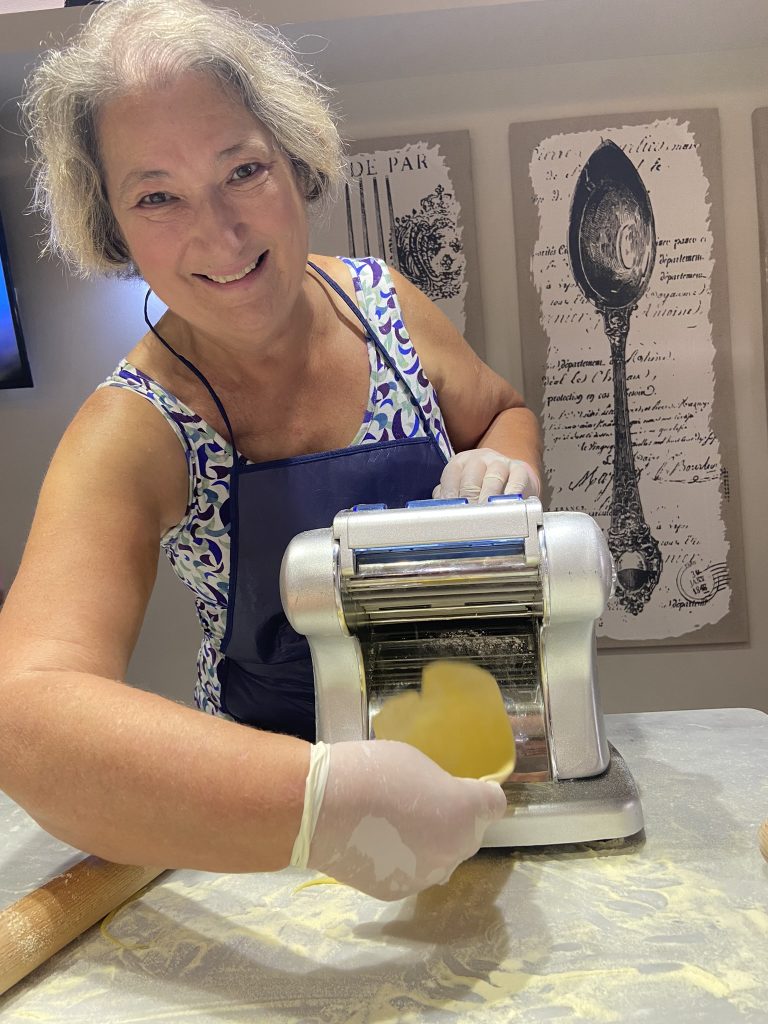
Making the Sauces
As he had all evening, Marco emphasized the importance of using just a few, top quality ingredients.
Amatriciana Sauce
The amatriciana sauce contains only three ingredients: Mutti tomato sauce (it only contains tomatoes grown in Italy, of course), small pieces of pork cheek that have been very slowly cooked to release the fat and flavor, and romano cheese.
Marco cooked the fettucine we’d just made for a very few minutes and then showed us how to combine the pasta with the three-ingredient sauce. The smell was amazing!
Cacio e pepe Sauce
This sauce is a Roman specialty and is the simplest of all. Only two ingredients are used–romano cheese and freshly ground pepper. That’s it! Marco demonstrated how he makes the sauce by stirring the starchy water from the boiled pasta into the cheese to make a rich, creamy sauce. He then added the fresh pepper. The result was to die for!
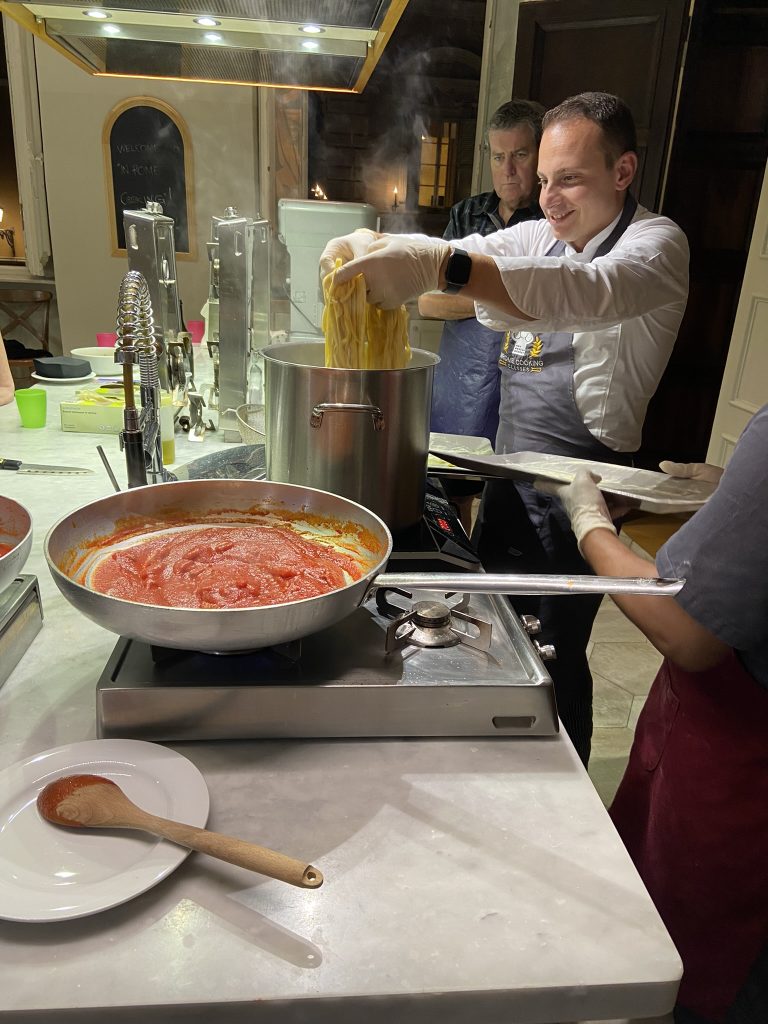
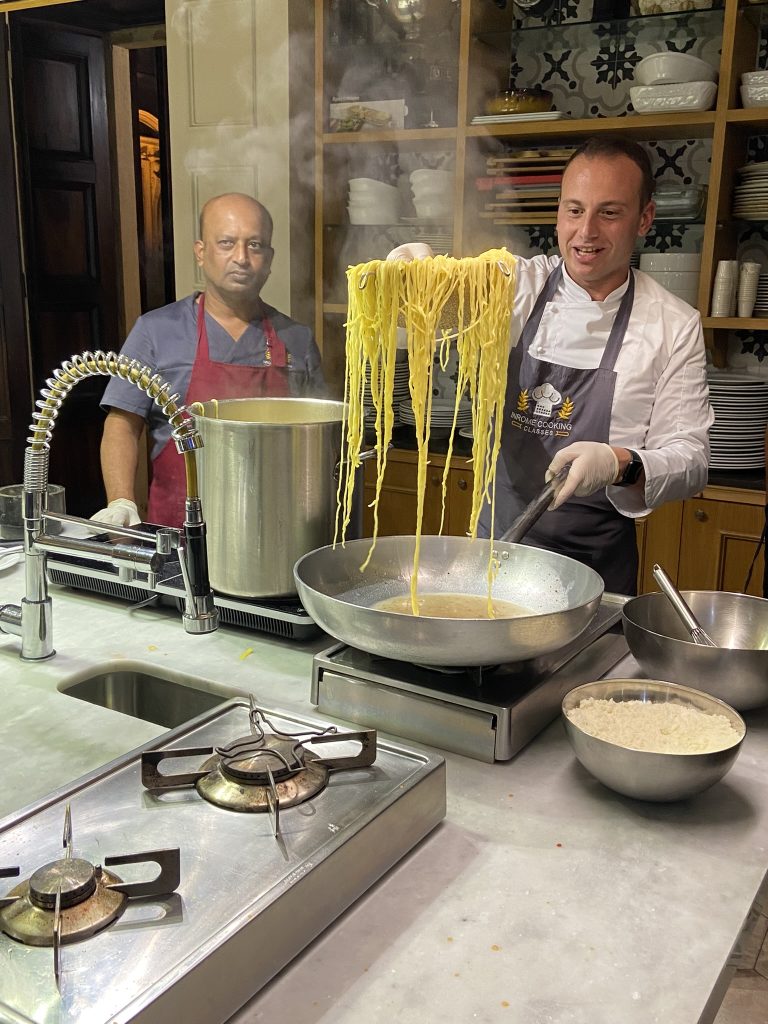
Eating the Results
Following the demonstrations of how the pasta is combined with the two sauces to make Amatriciana and Cacio e pepe, we were invited into the adjacent dining room, complete with coffered, Renaissance style ceiling. I joined the table of Canadians and enjoyed pleasant conversation about travel and food while enjoying the fruits of the evening’s labors.
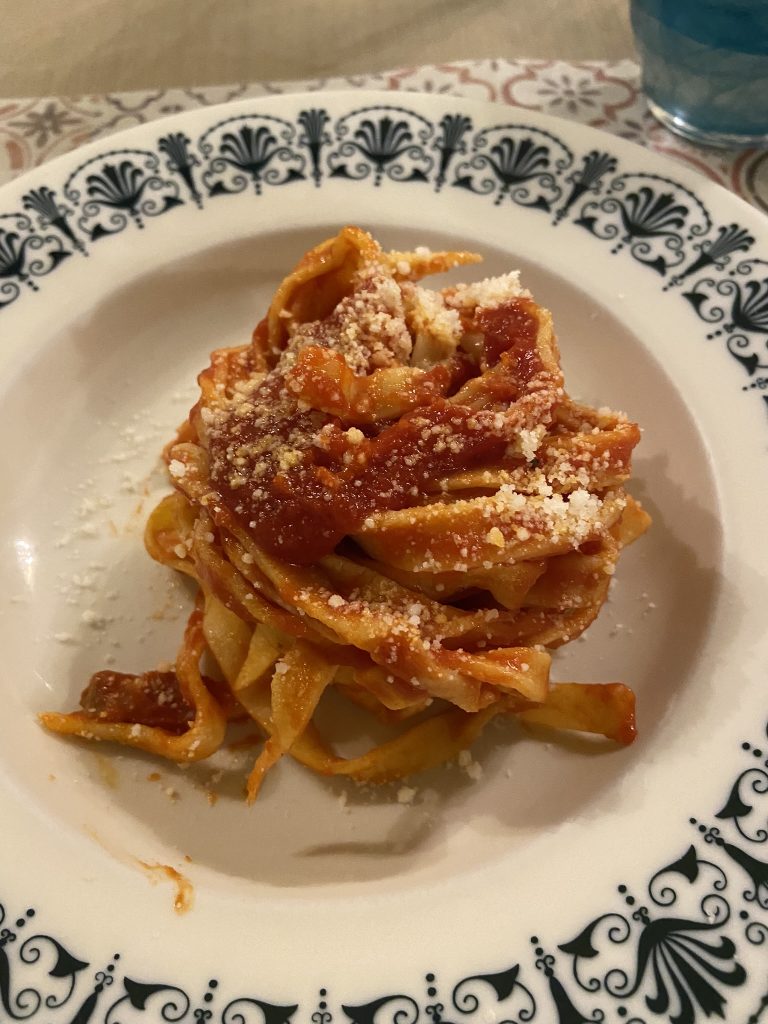
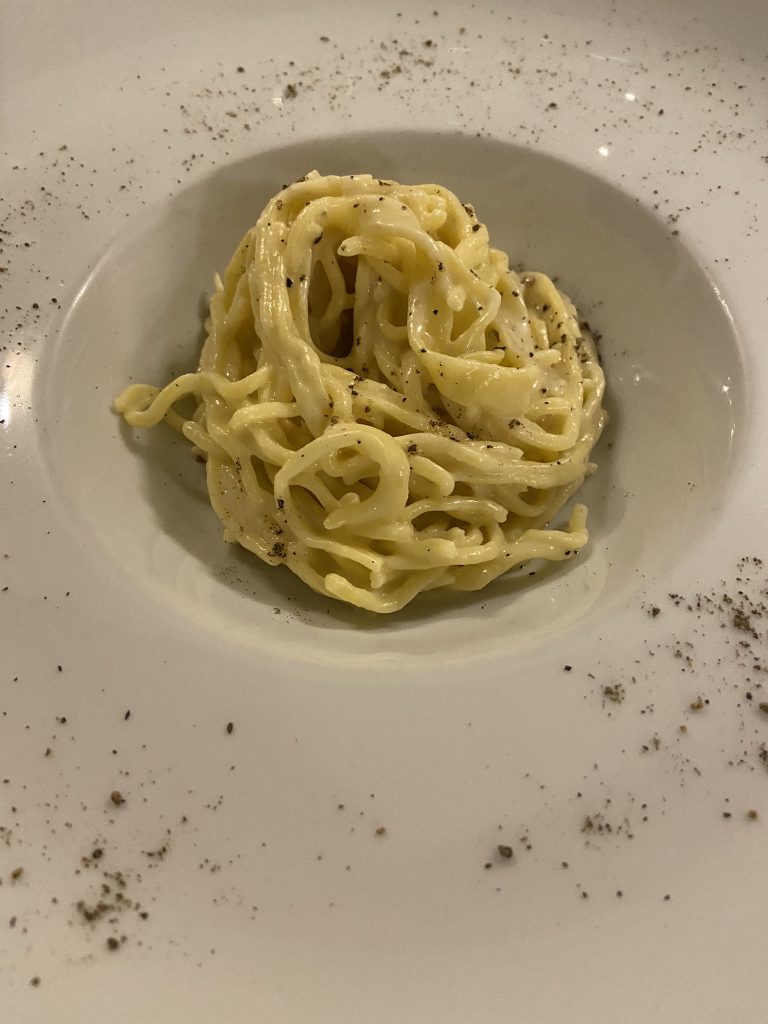
Rome Walking Tours
GuruWalk lists pay-what-you-please walking tours that connect tourists with tour guides all around the world. Check out their tours of Rome!
Conclusion
The three-hour cooking class (more like three and half by the time we finished eating) at InRome Cooking is a bargain at only €75 (price varies depending on which class you choose). Considering I enjoyed three delectable courses, learned a lot of valuable cooking tips and even got plenty of hands-on practice, I consider the fee very reasonable indeed.
Have you taken a cooking class in Rome? Share your experience in the comments below.
